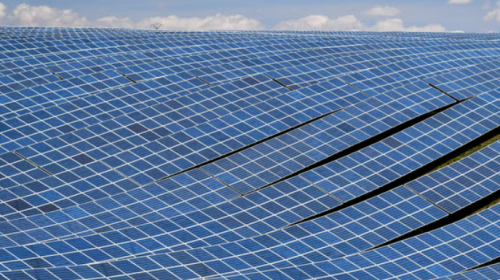Introduction
Solar energy is emerging as a key player in the global renewable energy landscape, offering a sustainable solution to the world’s increasing energy demands. In Pakistan, the adoption of solar panels has seen a significant rise due to the country’s abundant sunlight and the increasing need for alternative energy sources. However, the cost of solar panels can vary widely, influenced by several factors. This blog will explore these factors, providing insights into what affects solar panel prices and how this impacts the Pakistani market.
The Global Influence on Local Prices
The global market for solar panels plays a crucial role in determining local prices. As solar energy technology advances and production scales up, prices tend to decrease. However, fluctuations in the global economy, trade policies, and international demand can also impact costs.
Material Costs
The primary materials used in solar panel manufacturing include silicon, silver, and aluminum. The prices of these raw materials are subject to market fluctuations. For instance, silicon prices can be influenced by the demand and supply dynamics in the semiconductor industry, where it is also a crucial component.
Manufacturing Processes
The complexity and efficiency of manufacturing processes directly impact the cost of solar panels. Technological advancements can lead to more efficient production methods, reducing costs. However, initial investments in new technologies and machinery can temporarily drive prices up.
Technological Advancements
Continuous research and development in renewable energy technologies lead to more efficient and cost-effective solar panels. Innovations such as bifacial panels, which capture sunlight from both sides, or the use of perovskite cells, can significantly affect pricing. While these advancements can initially increase costs due to R&D expenses, they generally lead to long-term price reductions as they become more widely adopted.
Government Policies and Incentives
Government policies and incentives are crucial in shaping the solar energy market. In Pakistan, various programs and subsidies aim to promote solar energy adoption. For example, tax exemptions on the import of solar panels and equipment can lower prices for consumers. Conversely, changes in policy or the removal of incentives can lead to price increases.
Import Tariffs and Taxes
Import tariffs and taxes on solar panel components can significantly affect their prices. For instance, if the government imposes high tariffs on imported solar cells or modules, the cost for local manufacturers and, consequently, consumers will rise. Monitoring latest energy news can provide insights into upcoming policy changes that may impact prices.
Exchange Rates
The exchange rate between the Pakistani Rupee and other currencies, especially the US Dollar, is another critical factor. Since many solar panel components are imported, fluctuations in exchange rates can lead to price changes. A stronger dollar can make imports more expensive, thereby increasing the cost of solar panels.
Market Demand and Supply
The law of supply and demand also applies to the solar panel market. High demand for solar panels, driven by increasing awareness and adoption of renewable energy solutions, can lead to higher prices. Conversely, if supply outpaces demand, prices may drop.
Installation and Maintenance Costs
While the price of the solar panels themselves is a significant factor, installation and maintenance costs also contribute to the overall expense. The complexity of the installation process, the need for specialized labor, and ongoing maintenance can vary significantly, affecting the total cost of adopting solar energy.
Geographic Location and Climate
Pakistan’s geographic location and climate are advantageous for solar energy production. Regions with high solar irradiance, such as Sindh and Balochistan, can generate more electricity from solar panels, making the investment more cost-effective. Additionally, local climatic conditions, such as dust and temperature variations, can influence maintenance costs and overall efficiency.
Market Competition
Competition among solar panel manufacturers and installers can drive prices down. In Pakistan, the increasing number of companies entering the solar market has led to competitive pricing, benefiting consumers. However, it is essential to ensure that lower prices do not compromise quality.
Brand and Quality
The brand and quality of solar panels also affect their prices. Premium brands with a reputation for high efficiency and durability may charge higher prices. While opting for cheaper, lower-quality panels can reduce initial costs, it may lead to higher maintenance and replacement expenses in the long run.
Financing Options
The availability of financing options, such as loans and leasing programs, can make solar panels more affordable. In Pakistan, several banks and financial institutions offer green financing solutions to support the adoption of solar energy. These options can spread the cost over time, making it easier for consumers to invest in solar panels.
Impact of Oil & Gas Prices
Fluctuations in oil & gas prices can indirectly influence solar panel prices. When oil & gas prices are high, there is often a greater push towards alternative energy sources like solar. This increased demand can drive up prices for solar panels. Conversely, when oil & gas prices are low, the demand for solar energy may decrease, potentially lowering solar panel prices.
Economic Conditions
The overall economic conditions in Pakistan also play a significant role in solar panel pricing. Economic stability, inflation rates, and the availability of disposable income influence consumer purchasing power. A strong economy can encourage investment in renewable energy, while economic downturns may lead to decreased demand and lower prices.
Conclusion
Understanding the factors that affect solar panel prices is crucial for making informed investment decisions in the renewable energy sector. In Pakistan, a combination of global market dynamics, local policies, material costs, technological advancements, and economic conditions shape the pricing landscape. By staying informed about these factors and monitoring latest energy news, consumers and businesses can better navigate the market and make cost-effective choices in their transition to solar energy.
Investing in solar energy not only contributes to environmental sustainability but also offers long-term financial benefits. With the right knowledge and strategic planning, Pakistan can continue to harness its solar potential and move towards a greener, more sustainable future.







